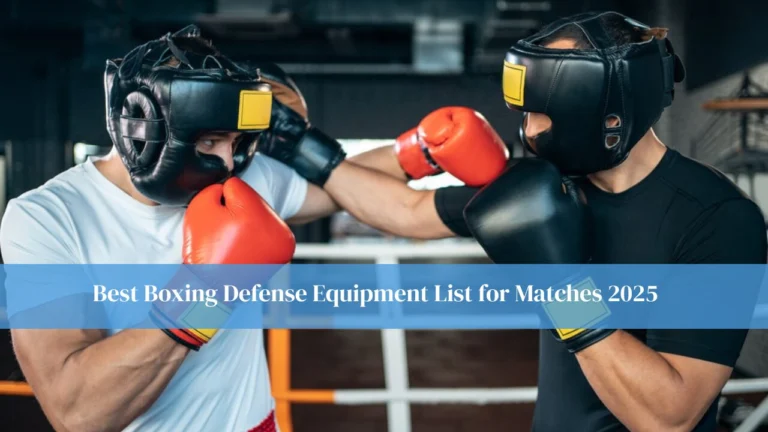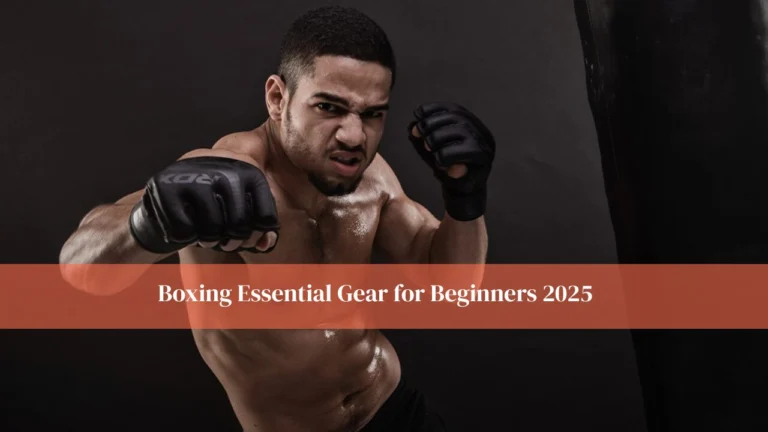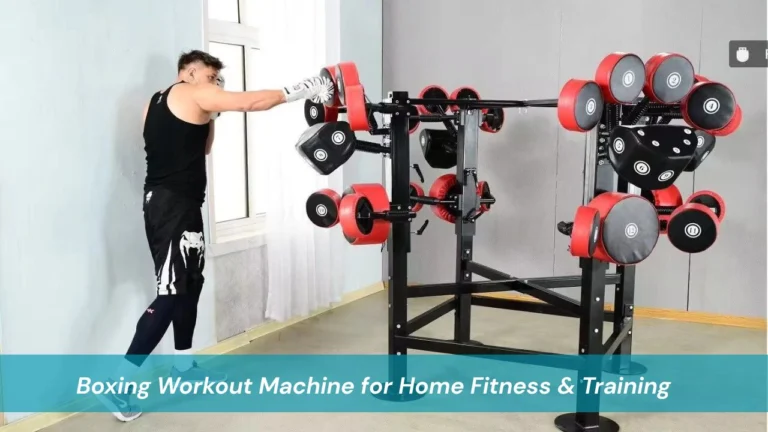Boxing is one of the oldest and most respected combat sports in the world, but it’s also one of the most dangerous. Every punch thrown carries the potential for serious injury. That’s why protective gear in boxing isn’t just an option, it’s essential. Whether you’re preparing for your first sparring session or gearing up for a professional match, wearing the right safety equipment can mean the difference between long-term injury and a safe, successful career.
In this comprehensive guide, we’ll explore the essential components of protective gear boxing, how to choose the right products, and why safety is the cornerstone of smart boxing.
What Is Protective Gear in Boxing?
Protective gear refers to specialized equipment worn by boxers to prevent injuries during training, sparring, or competition. The gear is designed to absorb impact, reduce damage to vulnerable areas, and enhance safety for both the wearer and their opponent.
From headgear to mouthguards and groin protection, each piece plays a critical role in reducing physical trauma.
Headgear: A Vital Barrier Against Injury
Headgear is one of the most recognizable pieces of boxing gear. While it doesn’t eliminate the risk of concussions, it does reduce the likelihood of cuts, bruises, and external head injuries. It protects the forehead, cheeks, chin, and ears, helping reduce facial injuries by up to 75%. Wearing headgear also boosts a boxer’s confidence during sparring.
When choosing headgear, look for multi-layer foam padding, adjustable chin straps, and lightweight, breathable materials. Certification by USA Boxing or AIBA is important if you plan to compete in amateur bouts. Headgear is best used in sparring sessions, amateur competitions, and during partner drills where head contact is likely.
Mouthguards: Protection for Teeth and Jaw
Your teeth, jaw, and tongue are incredibly vulnerable in the ring. A solid punch to the mouth without a guard can lead to serious injuries, including dental fractures and concussions. That’s where mouthguards come in they act as a shock absorber to protect your mouth and reduce the risk of brain injuries.
There are generally two types of mouthguards: boil-and-bite and custom-fit. The former is more affordable and widely available, while the latter is made by dentists to offer maximum protection and comfort. Whichever style you choose, always carry a backup mouthguard in your gym bag just in case.
Boxing Gloves: Your First Line of Defense
Gloves serve a dual purpose in boxing. Not only do they protect your opponent from the full force of your punches, but they also shield your own hands from injury. Different types of gloves are available for various training needs, including general workouts, sparring, and competition.
When selecting gloves, pay attention to their fit, wrist support, and the type of padding—high-density foam or gel are ideal for impact absorption. Velcro gloves are easier to wear, while lace-up gloves offer a more secure fit. Studies show that hand injuries are the most common type of injury in boxing, which is why choosing the right gloves is crucial.
Hand Wraps: Essential Inner Protection
Hand wraps are often underestimated, but they’re essential for protecting the tiny bones in your hands and wrists. They help prevent sprains, fractures, and cuts inside the glove. Two common styles are traditional cotton or elastic wraps and quick wraps, which include gel padding and are easier to put on.
When wrapping your hands, start at the wrist, cover the knuckles, and loop around the thumb. The wrap should be snug enough to offer support but not so tight that it cuts off circulation. Proper wrapping technique is key to minimizing risk during intense training sessions.
Groin Protectors: Critical for Low-Blow Safety
Low blows can happen, even in regulated bouts. A groin protector is vital to safeguard the pelvic area from unexpected impacts. Traditional cup-style protectors are common in amateur fights, while no-foul protectors offer added abdominal coverage and padding.
For female boxers, pelvic guards designed specifically for women provide comfort and coverage without restricting movement. Whether male or female, using a groin protector is a non-negotiable part of safe boxing practice.
Chest Guards: Essential for Female Fighters
Chest guards may not be required in every training session, but they are highly recommended for female boxers during sparring and amateur fights. These guards protect the breast area from direct impact and help reduce injury during competitive or practice bouts.
Typically made from plastic or padded foam, chest guards come with adjustable straps to ensure a secure fit. Most amateur competitions sanctioned by USA Boxing and AIBA mandate chest protectors for female athletes, making them a vital addition to your gear.
Shin Guards: For Kickboxing and Hybrid Sports
Shin guards are not commonly used in traditional boxing but are essential for athletes who also train in kickboxing, Muay Thai, or MMA. These guards protect the shin and instep from injury during striking and blocking techniques.
Shin guards should be made from lightweight yet durable materials with reinforced padding. Adjustable straps or sleeves help ensure they stay in place during high-impact movements. For hybrid fighters, investing in quality shin guards is just as important as boxing gloves.
Choosing High-Quality Boxing Gear
Knowing what to wear is just the first step. Selecting gear that fits well and meets safety standards is what truly makes a difference. Gear should be snug, secure, and allow for a full range of motion. Ill-fitting equipment won’t protect you effectively and may even cause injury.
Focus on high-quality materials like genuine leather for durability and high-density foam for shock absorption. Some elite-level gear includes gel padding for enhanced impact protection. Make sure any product you buy is CE or ASTM certified and approved by organizations like USA Boxing or AIBA.
What Happens Without Proper Gear?
Many seasoned fighters have learned the hard way about the importance of proper gear. Take, for instance, a regional amateur tournament in 2023 where a 17-year-old boxer entered the ring with loose-fitting gloves and no groin guard. After an accidental low blow, he had to forfeit the match and suffered a minor testicular injury.
That one mistake cost him his first competitive opportunity and forced him into a week-long recovery. The lesson here is simple: never take shortcuts with safety gear, no matter your experience level.
Maintaining and Replacing Gear
Even the best protective gear wears out over time. To extend its lifespan, you must take care of it properly. Gloves should be wiped down with anti-bacterial wipes and air-dried. Never leave them in your gym bag overnight. Headgear can be cleaned with a mild detergent and dried in the sun, while mouthguards should be soaked weekly in mouthwash or denture-cleaning tablets.
Replacing gear is equally important. Gloves should be swapped after about 150–200 rounds or when the padding starts to degrade. Headgear typically needs replacing every 12 to 18 months, and mouthguards every six months or when signs of damage appear.
Budget vs Premium Gear: A Quick Look
While budget gear is more affordable and fine for beginners, it generally lasts only 3 to 6 months and offers basic protection. Premium gear, though more expensive, lasts longer—up to 1–2 years or more and provides advanced safety features and superior ergonomic design.
Budget gear might lack certifications or high-quality materials, whereas premium equipment often includes CE or USA Boxing certifications. For beginners, starting with budget gear is acceptable. But if you’re sparring regularly or preparing for competition, premium gear becomes non-negotiable.
FAQ
What protective gear is required in amateur boxing?
Most amateur bodies, including USA Boxing, require:
- Headgear
- Mouthguard
- 10–12 oz gloves
- Groin protector
- Chest protector (for females)
How do I know my headgear fits correctly?
It should feel snug, cover all sides of your face and forehead, and stay in place during movement. If it shifts while shadowboxing, it’s too loose.
Is custom gear worth it?
Yes for frequent fighters, custom mouthguards and gloves provide superior fit, comfort, and protection. Especially for those training 4–5 days a week.
Can I use MMA gear for boxing?
Not advised. MMA gloves are open-fingered and provide minimal hand padding. Boxing-specific gloves are designed to absorb the repetitive impact from bag work or sparring.
What’s the best online store for boxing gear?
Boxing essential is the best online store for boxing gear. Always check return policies and sizing charts before purchase.
Conclusion
Protective gear in boxing isn’t just about ticking a box, it’s a vital part of every boxer’s toolkit. The right equipment protects your future in the sport, your body, and your confidence. While gear can be an investment, it’s minor compared to the cost of medical bills, missed training time, or permanent injuries.
Whether you’re shadowboxing in the gym or preparing for your first amateur fight, prioritize safety. Choose gear that fits, performs, and protects. Because in boxing, the smartest fighter isn’t just the strongest, it’s the safest.
Now is the time to gear up. Visit top-quality boxing protective equipment from Boxing essential to get started the right way.




